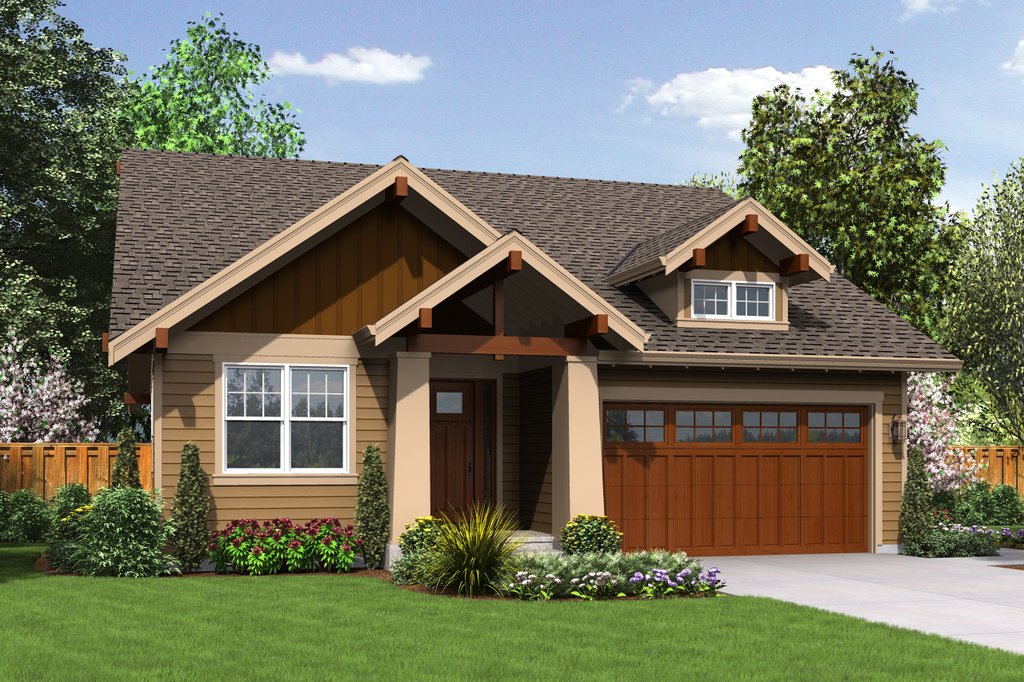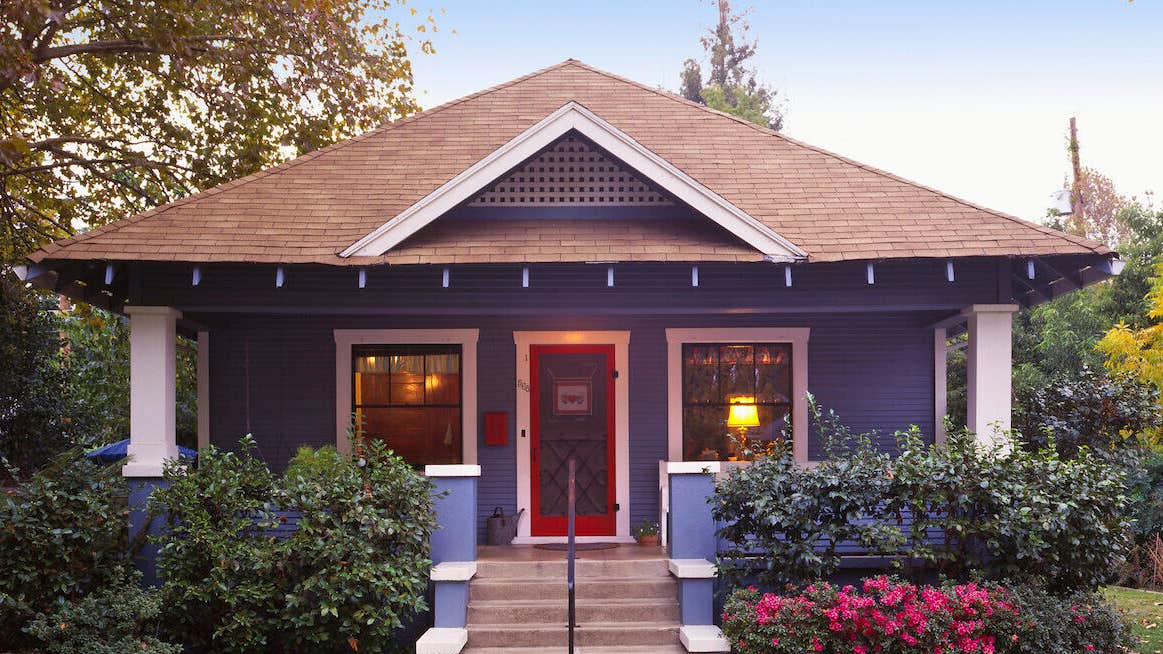Budget Guide for Building a craftsman style house Successfully
Wiki Article
The Duty of Arts & & Crafts Architects in Elevating Architectural Solutions in Residential Layout
Arts and Crafts architects greatly influence property design via their commitment to workmanship and sustainability. They prioritize handmade information and natural materials, which enhance both looks and neighborhood identification. By including clients in the layout procedure, these architects create special living rooms that resonate with individual preferences. This technique questions about the future trajectory of domestic architecture and its prospective effect on community dynamics. craftsman style house. What lies in advance for this classic style viewpoint?
The Concepts of Arts and Crafts Architecture
The significance of Arts and Crafts architecture hinges on its commitment to craftsmanship and simpleness. This building motion emerged in the late 19th century as an action to industrialization, highlighting the value of handcrafted information and all-natural materials. The principles of Arts and Crafts architecture focus on performance and harmony with the atmosphere. Structures generally feature low-pitched roofs, vast eaves, and revealed rafters, advertising a feeling of unity with nature.Artisans played a considerable function in this style, frequently integrating attractive components like discolored glass, tiles, and woodwork, which reflect neighborhood craftsmanship. The color palette often tends to be earthy and controlled, permitting structures to blend seamlessly right into their surroundings. Furthermore, the style motivates open floor strategies and common spaces, cultivating a feeling of togetherness. Overall, the concepts of Arts and Crafts architecture celebrate the elegance of simplicity and the relevance of human connection to both nature and area.

Sustainable Practices in Residential Layout
While the need for ecologically accountable living continues to expand, lasting practices in residential style have gotten considerable grip amongst architects and house owners alike. Architects are significantly including energy-efficient modern technologies and lasting products right into their layouts, intending to reduce carbon impacts and boost power conservation. Approaches such as easy solar design, environment-friendly roofings, and rainwater harvesting systems are coming to be conventional components of modern-day property architecture.Additionally, the option of locally sourced materials lessens transportation emissions and supports local economic situations. Emphasis on natural light and ventilation not just boosts interior air high quality but additionally reduces reliance on synthetic illumination and environment control systems. These lasting practices show a dedication to maintaining the environment while offering house owners with comfortable, effective space. As recognition of environmental issues grows, the combination of sustainability in property layout is positioned to come to be a specifying characteristic of contemporary architecture, guided by the concepts established by Arts and Crafts architects.
Customization and Personalization in Home Style
Personalization and personalization in home layout have emerged as vital trends in feedback to the growing desire for distinct living settings that reflect private preferences and way of livings. House owners significantly seek to tailor spaces that resonate useful site with their individual identifications, bring about an extra purposeful link with their home. craftsman style house. This motion encourages architects to involve customers in the style process, fostering cooperation that ensures the final outcome personifies the homeowner's visionElements such as bespoke formats, custom-made materials, and customized surfaces permit a diverse array of expressions in property style. Arts and Crafts architects play a pivotal duty in this development, highlighting craftsmanship and top quality. Their emphasis on integrating imaginative aspects with functionality warranties that each home is not only cosmetically pleasing however also distinctively fit to the occupants' requirements. Consequently, this emphasis on customization boosts the total property experience, producing areas that are both personal and long-lasting.

The Impact of Arts and Crafts Architects on Community Looks
As areas advance, the impact of Arts and Crafts architects greatly shapes their aesthetic landscape. By emphasizing handcrafted details, all-natural products, and typical construction methods, these architects create homes that reverberate with their surroundings. Their styles typically incorporate regional flora, structures, and colors, cultivating a sense of consistency in between built settings and nature.In addition, the Arts and Crafts movement advertises neighborhood identity through building connection. By urging house owners to embrace similar layout principles, communities establish a cohesive personality that improves aesthetic charm. This building uniformity not only enhances the visual experience but additionally imparts a feeling of satisfaction amongst locals.
The emphasis on sustainability and workmanship in Arts and Crafts architecture straightens with modern values, making these designs relevant in contemporary settings. Eventually, Arts and Crafts architects add considerably to the total elegance and social integrity of communities, leaving a long-term effect on their visual legacy.

Future Fads in Arts and Crafts Architecture
With an enhancing focus on sustainability and personalization, future patterns in Arts and Crafts architecture are positioned to mix standard craftsmanship with modern development - craftsman style house. Architects are likely to focus on eco-friendly products, making use of redeemed wood and natural stone to boost the sustainability of household styles. The combination of smart home modern technology will certainly end up being prevalent, enabling individualized living experiences without endangering aesthetic integrityThe revival why not try this out of artisanal methods will cultivate a renewed appreciation for handmade components, such as bespoke cabinets and custom ceramic tile work. Future designs may also reflect an emphasis on community-oriented rooms, motivating communication and link among homeowners. Outside living locations will acquire importance, seamlessly incorporating nature into the home atmosphere. As Arts and Crafts architecture evolves, it will certainly remain to honor its origins while adapting to modern demands, creating unified areas that mirror specific values and way of livings.
Frequently Asked Concerns
What Motivated the Arts and Crafts Movement in Architecture?
The Arts and Crafts motion in architecture was influenced by a response against industrialization, stressing handmade quality, natural products, and a go back to traditional workmanship, aiming to develop unified, functional rooms that commemorated artistry and originality.Exactly how Do Arts and Crafts Architects Collaborate With Clients?
Arts and crafts architects team up with clients through open discussion, prioritizing individual needs and looks. They emphasize workmanship and sustainability, fostering a collaboration that integrates the customer's vision with the engineer's proficiency in style and products.What Materials Are Generally Utilized in Arts and Crafts Houses?
Typical products in Arts and Crafts homes consist of natural wood, rock, and brick, stressing craftsmanship and natural aesthetics. These elements create a warm, welcoming atmosphere, showing the activity's dedication to quality and simplicity in design.How Do Arts and Crafts Designs Enhance Indoor Living Rooms?
Arts and Crafts layouts boost interior home by promoting natural light, open layout, and handcrafted information. These aspects promote a cozy, welcoming atmosphere, encouraging visit this web-site a connection between citizens and their atmospheres through thoughtful, functional looks.What Are Some Famous Examples of Arts and Crafts Architecture?
Famous examples of Arts and Crafts architecture include the Wager Home, Greene and Greene's masterpiece in California, and the Robie Residence by Frank Lloyd Wright. These frameworks display handcrafted information and harmony with nature, defining the motion's essence.Report this wiki page